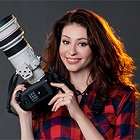Best Podcast Equipment in 2025
Top Podcast Equipment in 2025
- USB Microphone Podcast Recording Kit – Budget podcasting kit
- 2 Person Podcasting Podcast Kit Soundcraft Mixer – Best amateur podcast kit
- Focusrite Scarlett Audio Interface Podcast Bundle – Professional podcast kit
- Audio-Technica Vocal Microphone Pack – Best dynamic microphone
- Marantz Professional MPM-1000U - Best condenser microphone
- Blue Yeti USB Mic for Recording & Streaming – Best USB microphone
- Samson Recording and Podcasting Pack – Best XLR microphone
- OneOdio Stereo Monitor Headphones – Best closed-back headphones
- Rode Rodecaster Pro – Best audio interface
- Sony ICD-PX470 Stereo Digital Voice Recorder – Digital recorder for podcasting
- SanDisk 64GB Ultra SDXC UHS-I Memory Card – SD card for podcasting
- AUPHONIX Pop Filter for Blue Yeti Microphone - Pop filter
- Rode SM6 Microphone Shock Mount – Best shock mount
- Dell OptiPlex 27 7770 All-in-One – Best computer
- TroyStudio Portable Sound Recording Vocal Booth Box – Best acoustic treatment
The key to recording successful podcasts isn’t the amount of equipment but the highest quality of the sound. Examine my list of equipment and you will find complete podcast kits, microphones, headphones, mic stands and cables, amplifier, mixer, digital recorder, audio interface, pop filter, shock mount, an SD card and computer.
1. USB Microphone Podcast Recording Kit
Best budget podcast kit
Weight: 6.14 pounds | Package dimensions: 6 x 6 x 12.2 inches | Items quantity: 6
VIEW ON AMAZON


⊕ Features all the required gear
⊕ User-friendly
⊕ Affordable
⊕ Decent sound quality
⊖ Not found
An excellent kit for home podcast setup. It features a USB microphone, desktop mic stand, mic shock mount, USB cable and pop filter. If you are going to record a podcast elsewhere as well, the package includes a storage case.
I recommend purchasing this kit in case you are on a tight budget but still aspire to create podcasts with a qualitative sound level.
2. Podcasting Podcast Kit Soundcraft Mixer
Best amateur podcasting
Weight: 15.05 pounds | Package dimensions: 12.1 x 10.8 x 3.6 inches | Items quantity: 13
VIEW ON AMAZON


⊕ Extra cables
⊕ Low noise mixer
⊕ Headphones doesn’t weigh much
⊕ Hassle-free setting up process
⊖ Absence of a USB cable
One of the best podcasting setups that come with two XLR microphones and cables, two pairs of headphones and additional ear pads, desktop tripod stands with pop filters, a shock mount and a mixer.
Consider this option if you plan to record podcasts with two people and more, like interviews and so on.
3. Focusrite Scarlett Podcast Bundle
Best professional podcast kit
Weight: 13.5 pounds | Package dimensions: 18 x 14.5 x 12.4 inches | Items quantity: 9
VIEW ON ADORAMA


⊕ Intuitive audio interface
⊕ Suitable for gaming
⊕ Remarkable sound clarity
⊕ Compatible with various software
⊖ High price
⊖ Inconvenient to secure shock mount
This podcast equipment setup comprises two cardioid dynamic vocal microphones, two closed-back over-ear headphones, an audio interface, two pop filters and two microphone boom scissor arms.
Choose this kit if you are involved in podcasting at a proficient level. In case you are an amateur or a beginner, it will be hard to deal with pop filters and audio interface. Aside from doing podcasts, it is possible to use the kit for other sound-related activities, like recording music, skyping or gaming. The kit is compatible with various podcast recording software.
- Check out the best free audio editing software.
4. Audio-Technica AT2005USBPK Vocal Microphone Pack
Best dynamic microphone
Frequency response: 15-20.000 Hz | Sensitivity: 96dB | Type: dynamic
VIEW ON AMAZON


⊕ Easily regulated
⊕ Decent sound quality
⊕ Almost doesn’t capture background noise
⊕ Presence of a headphone out
⊖ Noisy keyboards
Despite the affordable price, this podcast mic produces smooth and clean sound. It features a USB digital output to be used with computers, as well as XLR analog output to be used with traditional mic inputs.
The mic’s holder is larger across than the classic microphone. However, it includes classic threads, meaning that it is possible to hook a shock mount.
5. Marantz Professional MPM-1000U
Best condenser microphone
Frequency response: 20-17.000 Hz | Sensitivity: -34dB | Type: condenser
VIEW ON AMAZON


⊕ Clean sound on discord
⊕ Whisper is captured
⊕ Reasonable price
⊕ Noiseless pre-amps on the mic
⊖ Not sturdy
The extensive frequency response of this cardioid mic is capable of capturing the complete audible range. Its low signal-to-noise ration will capture each subtle tone of the source audio.
Besides, it is the best podcast microphone when it comes to neutralizing the noise that emanates from the extreme or back sides of the mic.
6. Blue Yeti USB Mic for Recording & Streaming
Best USB microphone
Frequency response: 20-20.000 Hz | Sensitivity: 120dB | Type: USB
VIEW ON AMAZON


⊕ Four simple options
⊕ Hassle-free setting up process
⊕ SD card isn’t necessary
⊕ Tri-capsule array
⊖ Non-portable
This cheap podcast microphone and its three condenser capsules can record in all the possible conditions. Feel free to pick a required pattern – cardioid, stereo, bi- or omnidirectional.
To make the most out of a podcasting process, the mic offers the mute button, zero-latency headphone output and gain control.
7. Samson Q2U Microphone Recording
Best XLR microphone
Frequency response: 50-15.000 Hz | Sensitivity: -54dB | Type: XLR
VIEW ON ADORAMA


⊕ USB and XLR connectivity
⊕ Straightforward control via USB
⊕ Neutralizes background noise
⊕ Plug-and-play
⊖ Weighs a lot
Onboard 1/8" (3.5mm) headphone jack contributes to zero-latency control. As a result, users may hear themselves echo-free, along with a mix of their computer audio playback.
It is the best buy podcast microphone for many specialists engaged in this sphere as it may serve both as XLR and USB mic. An XLR option comprises a long cable for plugging and setting up the mic in any position on the surface.
8. OneOdio Stereo Monitor Headphones
Best closed-back headphones
Frequency response: 20-20.000 Hz | Product dimensions: 110 dB | Impedance: 32 ohms
VIEW ON AMAZON


⊕ Impressive sound
⊕ Single-side control
⊕ Convenient
⊕ Detachable cord
⊖ Absence of active noise cancellation
I suggest that the podcasters getclosed-back headphones. With the open-back model, the mic will be capturing undesired background noise.
These headphones feature specific ear padded cushions that neutralize noise and produce hi-fi sound. Moreover, the bundle comprises a 6.35mm plugand a 3.5mm plug of the classic size. It is possible to remove them and plug in the required mixer.
The model is supported by iPads, iPods, iPhones, Android phones and tablets, as well as other audio gadgets.
- View best large screen laptops is.
9. Rode Rodecaster Pro
Best audio interface
Product dimensions: 17 x 14 x 5 inches | Max Sample Rate: 48 kHz | Channels of I/O: 14 inputs/2 outputs
VIEW ON AMAZON


⊕ Hassle-free setting up process
⊕ Card-recording possibility
⊕ Extra power cables
⊕ Almost no noise is produced
⊖ Bulky
This kind of sound recording equipment features four microphone channels, the possibility to adjust the level automatically and record audio to a micro SD card in one click. Eight preset sound effects pads enable immediate triggering of SFX, music and so on.
Remote recording of the interview is available as well. A user just needs to connect the phone through Bluetooth or a TRRS cable. The device’s auto “mix-minus” audio doesn’t let the callers hear the echo.
- View the best file sharing services.
10. Sony ICD-PX470 Stereo Digital Voice Recorder
Best digital recorder
Recording Format: LPCM, MP3 | Recording Time: 5.3-159 hours | Microphone Type: Internal Stereo
VIEW ON AMAZON


⊕ Memory expansion capabilities
⊕ Remarkable battery life
⊕ Neutralizes background noise
⊕ Nice placement of buttons
⊖ Not found
If you are an amateur looking for the best podcast equipment, pay attention to this item.
The package features IC Recorder with two alkaline batteries providing 50+ hours of battery life to extend the recording time. To quickly movethe files to the computer, there is an integrated, straightforward USB connectivity.
The mic range of the recorder may be adjusted to achieve a clear voice and to record voice automatically, neutralizing background noise.
Once the recorder requires to be recharged, you will notice it on the screen that indicates battery.
- View more digital voice recorders.
11. SanDisk 64GB Ultra SDXC UHS-I Memory Card
Best SD card
Card Type: SDXC | Product dimensions: 1.3 x 0.9 x 0.1 inches | RAM: 32GB
VIEW ON AMAZON


⊕ Quick
⊕ Capacious storage
⊕ Affordable
⊕ Solid
⊖ The recorded info may be lost
If you are going to perform podcast audio recording outside, you will have to get an extra SD card in case the initial space on a digital recorder runs out. A 32GB memory card will perfectly do.
This model is affordable and is supported by all the widely used digital recorders. It is rather solid, but it may be lagging occasionally and may erase the recorded info.
- Learn about the best SD cards for DSLR.
12. AUPHONIX Pop Filter
Best pop filter
Weight: 0.4 pounds | Product dimensions: 14.6 x 7.3 x 1.2 inches | Hold capacity: 360 degree
VIEW ON AMAZON


⊕ Reliable 360-degree hold
⊕ Double-layer shield mesh
⊕ Clear voice sound
⊕ A video guide is featured
⊖ Slight gliding
This pop filterpleases users with double-layer noise protection that prevents the sound from being stifled. It excels at neutralizing “t” and “p” popping sounds.
I suggest that you get this piece of recording equipment due to a reliable 360-degree hold, hassle-free setting up process and affordable cost.
Even though the filter is presumably created to be used with a Blue Yeti mic, the filter and the mic aren’t fully compatible.
- Read more about the best card readers.
13. Rode SM6 Microphone Shock Mount
Best shock mount
Weight: 1 pound | Product dimensions: 1 x 1 x 1 inches | Color: black
VIEW ON AMAZON


⊕ Angles may be regulated
⊕ In-built pop filter
⊕ Stylish design
⊕ Ideal for Rode mics
⊖ Could be steadier
This shock mount comprises a detachable pop shield with two axes of regulation and a telescopic arm for versatile use. It is compatible with different kinds of big diaphragm mics.
The device boasts a robust metal design. As for the pop filter, it is fabricated of two cloth layers with an air space in between.
- View at the best SD card holders.
14. Dell OptiPlex 27 7770 All-in-One
Best computer for podcasting
Internal Microphone: No | Audio System: Waves MaxxAudio Pro | RAM: 16GB
VIEW ON AMAZON


⊕ Intel 9th generation processor
⊕ HD TrueVision web camera& microphone
⊕ Remarkable efficiency
⊕ 16 GB RAM
⊖ High price
Here is a decent computer for podcasting from the middle market. Among its prominent features are a robust processor and 16 GB of RAM providing remarkable efficiency. The integrated memory and a 3-in-1 SD card reader are included as well.
Even if you don’t have all the required podcast equipment, you can still record podcasts solely with this computer since it offers HD TrueVision web camera and microphone. Using Bluetooth, it is possible to move the recorded files, for instance, from a digital recorder.
- View the best budget monitors.
15. TroyStudio Sound Recording Booth Box
Best acoustic treatment
Weight: 4.08 pounds | Product dimensions: 16.9 x 16.1 x 3.1 inches | Material: foam
VIEW ON AMAZON


⊕ 2’’ highly dense acoustic foam
⊕ Fast and hassle-free setting up process
⊕ Details are taken into consideration
⊕ Portability
⊖ Not really stable
The device neutralizes the undesired sound around, thus boosting the clarity of the recording and eliminating the echo. Nevertheless, the recorded audio doesn’t sound satisfactory in some cases.
Foam panels feature holes with a mic stand and audio cables. Feel free to locate it on the wall or a desk.
- Read about Adobe Audition alternatives.
List of the Best Podcast Equipment
| Image | Name | Features | |
|---|---|---|---|
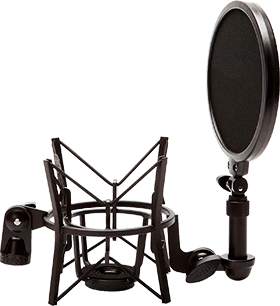 |
Rode SM6 Microphone Shock
UNIVERSAL |
Check PRICE → | |
 |
Blue Yeti USB Mic
CLEAR SOUND |
Check PRICE → | |
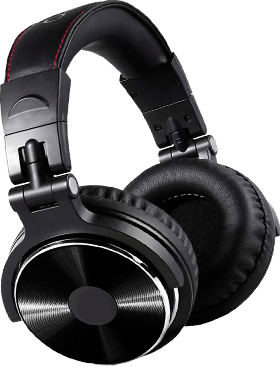 |
OneOdio Adapter-Free
PROFESSIONAL |
Check PRICE → | |
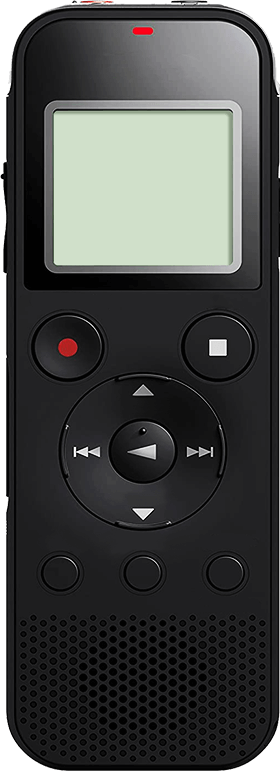 |
Sony ICD-PX470 Stereo
PORTABLE |
Check PRICE → | |
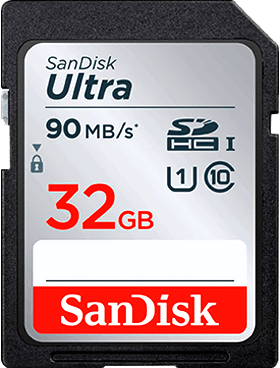 |
SanDisk 64GB Ultra
BUDGET |
Check PRICE → |
How to Choose the Best Podcast Equipment?
Once you begin looking for the best podcast equipment, you may be overwhelmed by a vast selection of devices and their specifications. That’s why I singled out certain parameters for you to take them into account and make an informed choice of the equipment.
Recording Software and Accessories
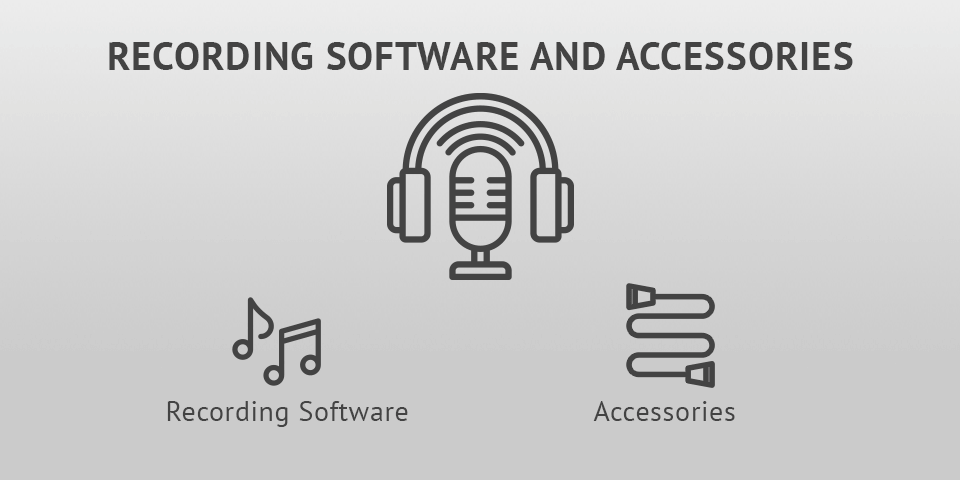
Recording software. Adobe Audition CC is among the most popular programs used by podcasters. It impresses users with an extensive variety of audio features and effects. It isn’t exactly beginner-friendly, but if you are serious about recording podcasts in the long run, you will surely have to master it.
Accessories. Mic stands and cables are also a must for successful podcasts. For instance, an XLR mic requires a number of cables.
As the audio is being recorded, a microphone absolutely has to be secured right in front of the speaker’s face. There exist various kinds of mic stands: floor tripod boom arms, integrated and tabletop desk mic stands, boom arms that are attached to a desk and so on.
Microphones
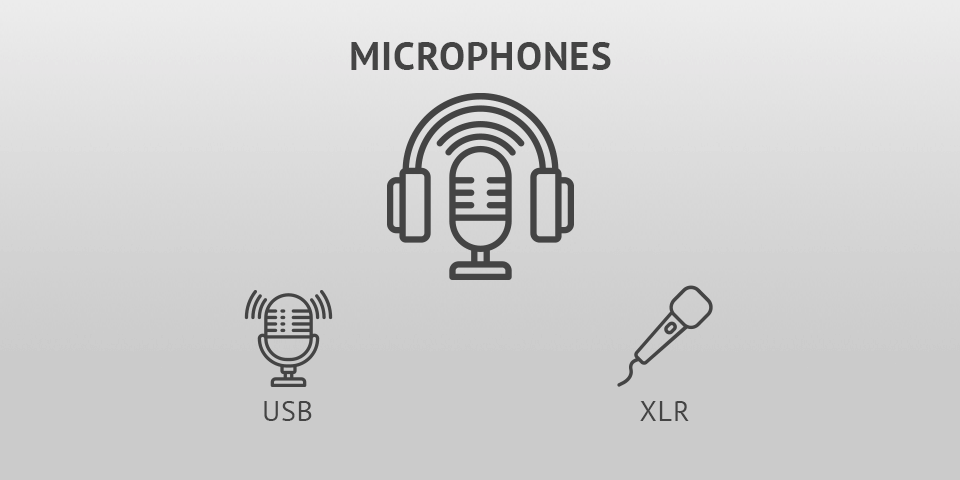
USB. This mic type doesn’t call for additional gear. The user has to connect it to a PC, laptop or smartphone and simply begin recording – no need to put in the extra effort.
Since USB mics are so user-friendly, it is a perfect fit for those who are making the first steps in podcasting.
XLR. This mic type requires an audio interface and a mixer. These are plugged into a preamp and are connected to a PC.
XLR mics have to be used with great care, so I would recommend them to proficient podcasters only.
Headphones
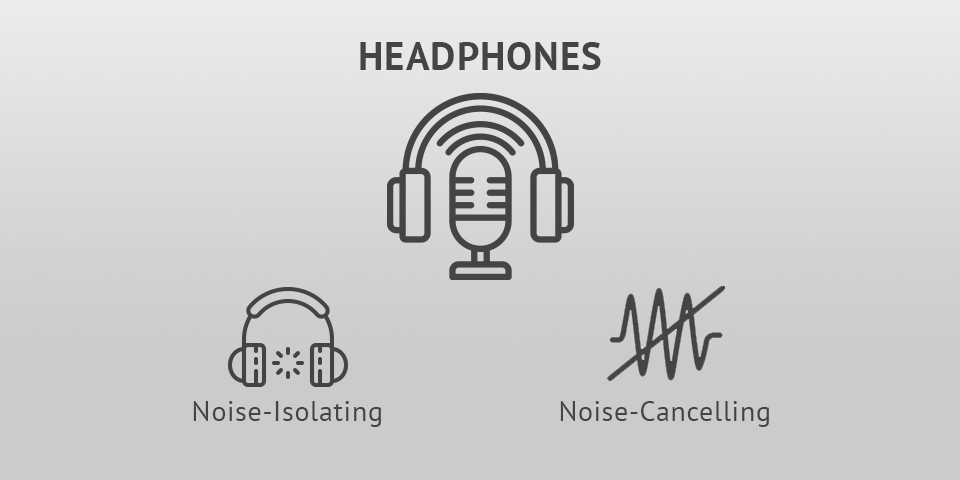
Two types of headphones are present: noise-isolatingand noise-canceling ones. You may think that they are identical, but, in fact, they function differently when it comes to recording podcasts.
Noise-isolating ones are blocking ambient noise in a physical way, using their seal against the person’s ear.
Noise-canceling ones are capable of doing that as well, but they are blocking actual soundwaves in an electronic way. The best headset for podcasting would be a noise-isolating one. Such headphones equalize the audio and frequencies more effectively. As a result, the user will achieve an improved balance of audio levels and natural sound.
FAQ
- • How to choose software for podcasting?
When choosing recording software for podcasting, consider the features it offers, such as multi-track recording, editing capabilities, and audio effects. Look for software that is user-friendly and compatible with your operating system. Research the reputation and reliability of the software, read reviews, and seek recommendations from other podcasters. Lastly, consider your budget and whether the software offers a free trial or a flexible pricing plan that suits your needs.
- • What features to consider when selecting a cheap podcast microphone?
When selecting a cheap podcast microphone, consider the sound quality it offers within your budget range. Ensure the microphone is durable enough to withstand regular use. Check if it has the necessary connectivity options for your recording setup, such as USB or XLR. Additionally, look for any additional accessories or extras that may come with the microphone to enhance your recording experience.
- • Where to look for good podcasting headphones?
To find good podcasting headphones, consider checking reputable online marketplaces like Amazon or specialized audio equipment retailers. Additionally, explore reviews and recommendations from podcasters and audio professionals to help guide your decision-making process.































